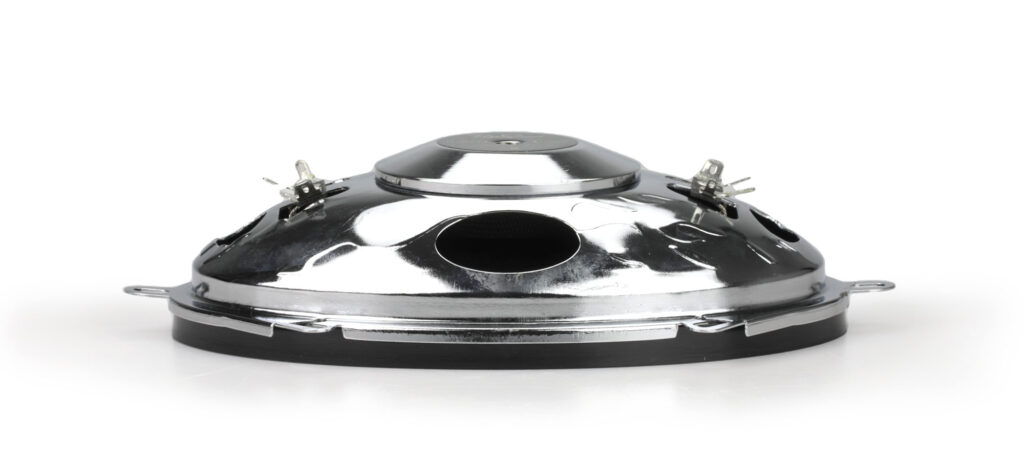To understand the advantages of Neodymium magnets, a brief review of how speakers function is often helpful. Speakers use magnets to create the sound we hear by moving the speaker cone up and down. The movement pushes and pulls the surrounding air producing the waves of sound we hear. A speaker uses two magnets, one attached to the speaker cone and the other to the voice coil. As the electrical current flows through the voice coil, it creates a magnetic field that interacts with the two magnets, causing the cone to move up and down.
Speakers typically use a ceramic (ferrite) magnet, or a Neodymium magnet mounted to the bottom of the speaker. Both magnet types work in the same way. However, a ceramic magnet is much larger than a Neodymium magnet and outputs less power despite its size. A Neodymium magnet is much smaller than a ceramic magnet and is more powerful. The main advantages of a speakers that use Neodymium magnet structures are their high-power output and the shallow mounting depth, two extremely important factors when installing speakers in a classic car or truck.
Some classic cars and trucks have very little space available for mounting modern car stereo speakers. The dashboard and door areas in these classic vehicles typically cannot accommodate a speaker with a large ceramic magnet because of the limited space. A speaker with a Neodymium magnet becomes a much better choice in these cases. The shallow mounting depth allows them to fit in tight spaces, and with the additional power output there are no sacrifices in power handling or sound quality.


